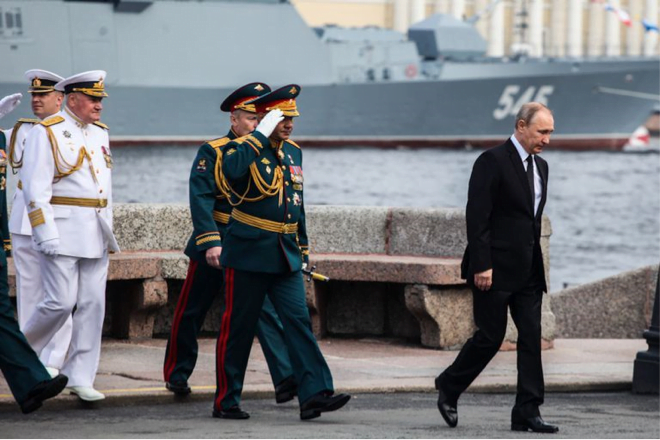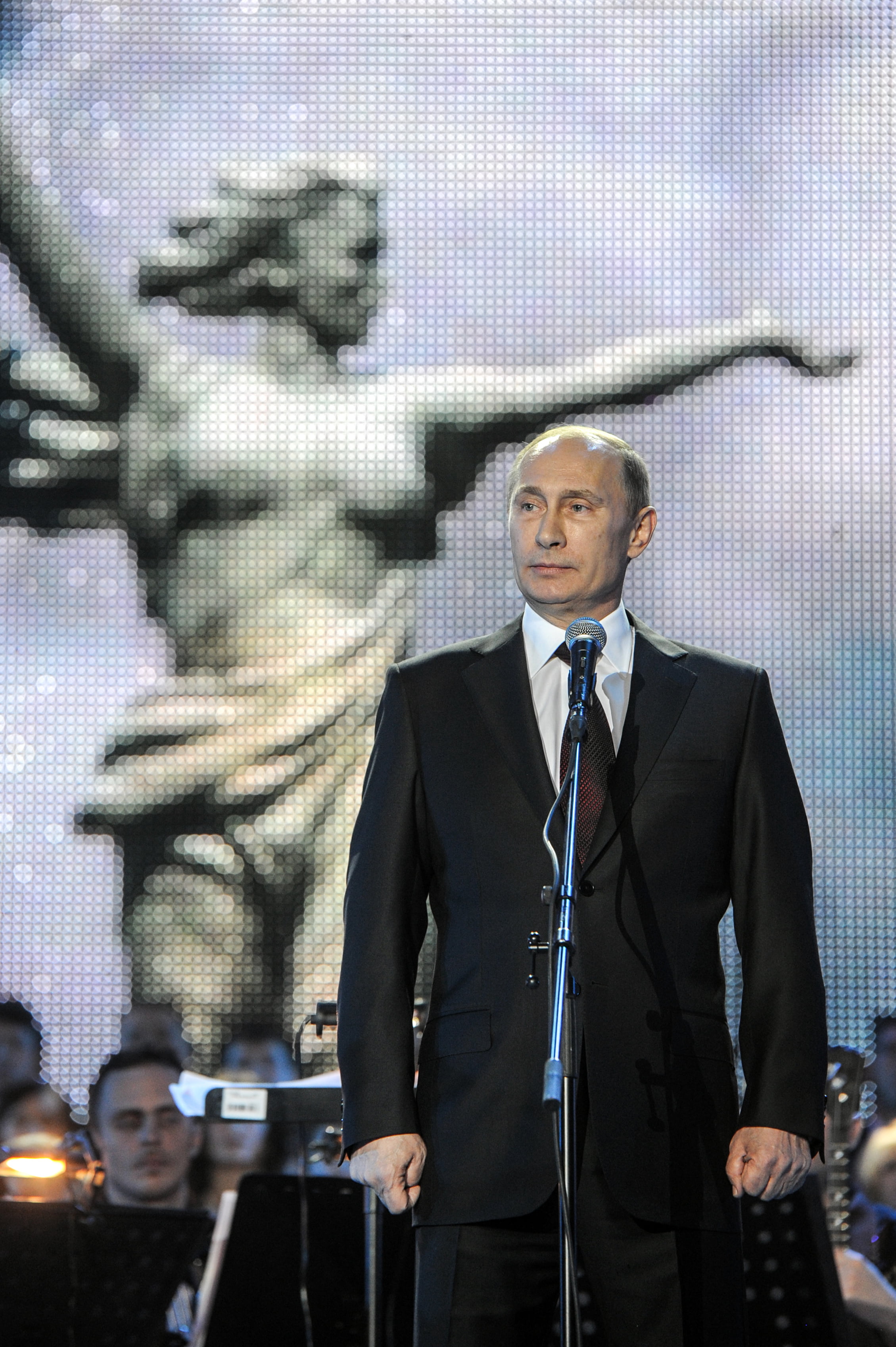By Edward Timperlake
President Putin has recently threatened a direct attack against the United States with nuclear weapons if we do not comply with his strategic approach to Europe and the West.
The Russian PR machine has kicked in and we have a recent you tube visit from a St. Petersburg choir highlighting a historical tune threatening such an event.
Notably, President Putin focused on the employment of nuclear tipped hypersonic cruise missiles launched from his navy’s submarines off of the East Coast of the United States.1
In effect, what Putin did was to sound “General Quarters” for a combat proven warfighting Navy to go on high alert. The United States has now joined allies like Denmark which are the focus of the use of nuclear weapons threats as part of normal diplomacy.
But Putin has really picked the wrong adversary; one that can only shoot back with devastating results on Russia itself but operate in ways that can shred his own navy.

The greatest intangible strength of the US Sea Services is the fact that the diverse backgrounds of all Americans are forged together into a fighting Navy based on honor, and team play that has as it’s very foundation the principle of always being a performance based meritocracy.
The greatest tangible strength is that from the heavens to the deepest of the deep, the American Navy has world class state-of the art weapons and platforms integrated seamlessly into an evolving kill web, nuclear tipped.
No platform fights alone and the Navy always “trains trains trains” for evolving contingencies.
Refocusing on Core Threats
“Putin also announced the coming deployment of the new Zircon hypersonic missile for the Russian navy, saying it’s capable of flying at nine times the speed of sound and will have a range of 1,000 kilometers (620 miles).
He said the Zircon program will not be too costly as the missile has been designed to equip Russia’s existing surface ships and submarines.”
“Potie Poot” as he was called by President Bush 43 or the man President Obama could do flexible business with after the 2012 Election has yet again miscalculated. Our President and the military will take his threats very seriously and act appropriately to show and not tell him that threatening United States with a sub launched nuclear strike is not a good plan.
The Cold War legacy to this day is that the number one event that can destroy America is a successful attack by an enemy that can launch a multiple nuclear warhead strike on the United State.
Everything else that currently takes probably 99% of our worries in print is second order.
This is not a bad thing because it reflects that our national command authority and Commander-in Chief are getting it right by refocusing our defense efforts on those peer competitors which seek to hurt us most.
Today a barrage fire targeting America with a massive strategic strike using nuclear warheads by Russia or China is still the ultimate strategic threat. The American military triad of ready launch missiles in silos, USN Boomers on station and strategic bombers comprise our strategic response force that is standing ever vigilant.
Deterring Russia and China with massive retaliation is the easiest theory to understand in this murky 21st Century “Second Nuclear Age”.
In a seminal book Professor Paul Bracken of Yale University underscored the challenge of deterrence in the Second Nuclear Age:
What I wanted to do was to shift the debate.
There are many, many studies of books about deterrence, but deterrence really needs to be broken up into what I would call smaller chunks, which really gets into the subject of escalation and de-escalation.
I don’t think it’s possible to talk about deterrence and not talk about escalation and de-escalatio2
In his book, he argued that mastering the maneuver space for the threat to use nuclear weapons was part of escalation dominance which leaders who have access to nuclear weapons have access to and work to master.
Nuclear weapons thus made the calculation of “next moves” central to strategy. A mistake, a careless decision, or a misestimate could lead to a lot more than political embarrassment. Big decisions over war or peace were broken down into lots of smaller ones about the use of force and where it might lead.
And even the smallest decisions got high-level attention. In the Berlin crisis of 1948, the decision as to the kind of rifles U.S. guards carried on trains running to Berlin, M-1s or carbines, was kicked all the way up to the White House.
The skill needed to identify these smaller decisions was learned on the job. It was not anticipated. Everything said here about the calculated use of force to achieve various purposes, basing decisions about using force on estimates of an opponent’s reaction, breaking down sweeping decisions on war or peace into much smaller “chunks,” and high-level attention given to micro moves—none of this was foreseen. It was “discovered” by national leaders and, even then, usually after they got into a crisis.3
What the Putin threat is really about is putting on the table elements of trying to dominate escalation management.
“If you respond to my violations of the INF treaty, by actually reshaping your capabilities to defense your allies, I would move my chips on the table and move to destroy you at the heart of government with a new technology which you have no response to.”
Sounds interesting: but let us look at how Putin is working to shape an escalation declaratory control policy and how the United States can not just respond, but pre-empt?
This is not about arms control; it is about the maneuver space in a pre-crisis situation in which declaratory policy coupled with capabilities can shape outcomes, without even firing a shot.
Editor’s Note: This article is the first in a multiple article series which will be capped by a publication of the articles into a single report when the series is completed.
Footnotes
- “Russian President Vladimir Putin has threatened to target the U.S. with nuclear-tipped missiles capable of quickly striking the continental United States.”
https://www.popularmechanics.com/military/weapons/a26431348/russia-putin-inf-treaty-new-nukes/
- https://sldinfo.com/2013/01/the-challenge-of-deterrence-in-the-second-nuclear-age-a-discussion-with-paul-bracken/
- Bracken, Paul. The Second Nuclear Age: Strategy, Danger, and the New Power Politics (p. 41). Henry Holt and Co.. Kindle Edition.


